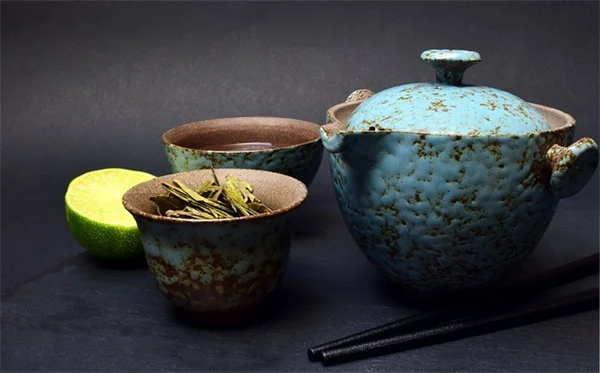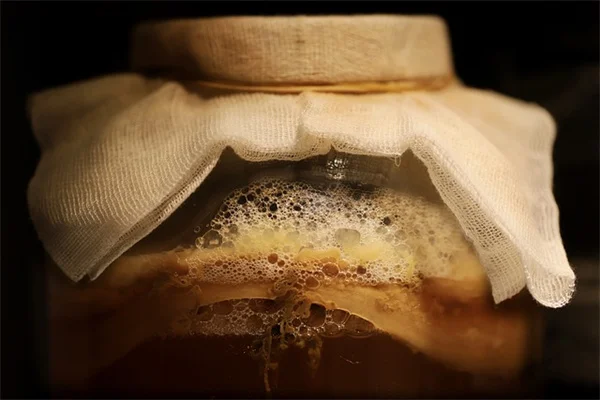5 Surprising Cocklebur Benefits for Skin: Anti-Aging Weed or Hidden Danger?
Advertisement
Can cocklebur really improve your skin? The answer is: Yes, but with major precautions! Researchers have discovered this pesky weed contains powerful antioxidants that may boost collagen and protect against UV damage. I was shocked to learn that the same burrs that ruin my hiking socks could potentially revolutionize skincare! But here's the catch - cocklebur also contains toxic compounds that can damage your liver. That's why we need to wait for more studies before you'll find it in your favorite moisturizer. The science shows promise, especially for anti-aging benefits, but you definitely shouldn't start rubbing these prickly plants on your face just yet!
E.g. :Ryan Reynolds Reveals Dad's Parkinson's Battle: Early Signs You Should Know
- 1、The Surprising Anti-Aging Powers of a Pesky Weed
- 2、Cocklebur Through the Ages: More Than Just a Weed
- 3、The Beauty and the Beast of Cocklebur
- 4、What This Means for Your Skincare Routine
- 5、Your Burning Questions Answered
- 6、Beyond Skin Deep: Cocklebur's Hidden Talents
- 7、DIY Dangers: Why You Shouldn't Play With Cocklebur
- 8、Cocklebur in Your Kitchen? Not So Fast!
- 9、The Bigger Picture: What Cocklebur Teaches Us
- 10、FAQs
The Surprising Anti-Aging Powers of a Pesky Weed
Meet the Cocklebur - Nature's Unexpected Beauty Secret
You know that annoying weed that sticks to your clothes during hikes? Turns out, cocklebur might be your skin's new best friend! Scientists at Myongji University discovered this spiky plant's fruit contains powerful antioxidants and anti-inflammatory compounds that could revolutionize skincare.
Imagine this: while you're busy trying to remove these burrs from your dog's fur, researchers are finding they might help boost collagen production and protect against sun damage. Talk about judging a book by its cover! The fruit's extracts showed promising results in lab tests, speeding up wound healing and defending skin cells from UVB radiation - the main culprit behind wrinkles and aging.
From Weed to Wonder: The Science Behind It
Here's where it gets really interesting. The research team isolated specific compounds that:
- Increased collagen synthesis by up to 30% in lab tests
- Reduced UVB damage by nearly 40% compared to untreated cells
- Accelerated wound healing time by about 25%
But wait - before you start rubbing cockleburs on your face, there's a catch. The plant contains carboxyatractyloside, a liver-damaging toxin. This brings us to an important question: How can something so potentially harmful also be beneficial? The answer lies in careful extraction and dosage control - which is exactly what researchers are working on now.
Cocklebur Through the Ages: More Than Just a Weed
 Photos provided by pixabay
Photos provided by pixabay
A Historical Perspective on This Versatile Plant
This isn't cocklebur's first rodeo in traditional medicine. For centuries, cultures worldwide have used it for:
| Culture | Traditional Uses |
|---|---|
| Chinese Medicine | Treating headaches, nasal congestion, and rheumatism |
| Native American Remedies | Tea for colds, diarrhea, and kidney issues |
| European Folk Medicine | Skin pigmentation disorders and tuberculosis |
Modern science is now validating what traditional healers suspected - this plant packs a powerful punch. Recent studies have explored its potential in cancer and rheumatoid arthritis treatments, making it one of nature's most versatile (if prickly) gifts.
Geographic Variations: Not All Cockleburs Are Created Equal
Here's a fun fact that might surprise you: Korean-grown cockleburs showed 15% stronger antioxidant effects than their Chinese counterparts. Researchers believe soil composition and climate conditions create these variations. This matters because when we're talking about skincare ingredients, even small percentage differences can mean big results for your complexion.
The Beauty and the Beast of Cocklebur
The Promising Benefits for Your Skin
Let's break down why dermatologists are getting excited:
First, the antioxidant properties could help neutralize free radicals - those pesky molecules that accelerate aging. Second, the anti-inflammatory effects might calm irritated skin better than your favorite chamomile tea compress. And third, the collagen boost? That's like giving your skin its very own fountain of youth!
Dr. Eunsu Song, the lead researcher, suggests cocklebur extracts could work wonders when combined with other anti-aging heavyweights like hyaluronic acid. Picture this dynamic duo fighting wrinkles together - it's like the skincare equivalent of peanut butter and jelly!
 Photos provided by pixabay
Photos provided by pixabay
A Historical Perspective on This Versatile Plant
Now for the serious talk. The plant's toxicity isn't something to take lightly. Would you swallow ten apple seeds knowing they contain cyanide? Probably not. Similarly, just ten cocklebur seeds can cause liver damage in children. This stark reality reminds us why proper processing and dosage are absolutely crucial.
Cosmetic chemist Ginger King warns that while cocklebur could potentially serve as a natural preservative, rigorous safety testing is essential. The takeaway? We're excited about the possibilities, but we're not ready to start DIY cocklebur facials just yet!
What This Means for Your Skincare Routine
The Future of Cocklebur in Beauty Products
Imagine walking into Sephora a few years from now and seeing "Cocklebur-infused Anti-Aging Serum" on the shelf. That future might be closer than you think! Researchers are already planning follow-up studies to:
- Identify the safest, most effective concentrations
- Understand the biological mechanisms at work
- Develop animal-free testing methods
The key will be finding that Goldilocks zone - not too much, not too little, but just the right amount to reap benefits without risks. It's like making the perfect cup of coffee; too weak and it's useless, too strong and you're bouncing off the walls!
Expert Opinions: The Pros Weigh In
Dermatologists are cautiously optimistic. Dr. Noor Hanif Said acknowledges cocklebur's traditional uses but emphasizes the need for modern safety protocols. Meanwhile, toxicologist Dr. Kelly Johnson-Arbor calls the findings "intriguing" but reminds us that traditional preparation methods often involved special baking to reduce toxicity.
The consensus? This research opens exciting doors, but we need more data before cocklebur becomes mainstream. As my grandma used to say, "Good things come to those who wait" - and in this case, waiting means letting science do its thorough work.
Your Burning Questions Answered
 Photos provided by pixabay
Photos provided by pixabay
A Historical Perspective on This Versatile Plant
Short answer: Absolutely not! While it's tempting to forage for your own anti-aging remedies, this isn't the plant to experiment with. The line between beneficial and harmful is too fine for DIY attempts. Leave the extraction and formulation to professionals who can ensure safety and efficacy.
Remember that viral cinnamon challenge? Some things are better left to experts - and cocklebur skincare definitely falls into that category. Stick to proven ingredients for now, and keep an eye out for properly formulated products in the future.
When Might We See Cocklebur Products?
The research timeline typically looks like this:
- Phase 1: Initial discovery (where we are now)
- Phase 2: Safety and efficacy studies (2-3 years)
- Phase 3: Commercial development (2-5 years)
So while you might not find cocklebur serums next week, the beauty industry moves fast. Who knows? By the time you're reading this, some innovative brand might already be working on formulations. The future of skincare is looking... well, a little prickly, but in the best possible way!
Beyond Skin Deep: Cocklebur's Hidden Talents
Could This Weed Help Fight Serious Diseases?
While everyone's buzzing about cocklebur's skincare potential, medical researchers are quietly investigating something even bigger. Early studies suggest certain compounds in cocklebur might help regulate blood sugar levels. Imagine if this pesky weed could become a natural ally against diabetes!
Here's what we know so far: In animal studies, cocklebur extracts showed promising effects on glucose metabolism. The mechanism isn't fully understood yet, but scientists think it might work similarly to some diabetes medications - just without the hefty price tag. Of course, we're years away from any clinical applications, but isn't it amazing how nature keeps surprising us?
The Environmental Impact You Never Considered
Let's talk about something most beauty articles ignore - sustainability. Cocklebur grows like crazy in the wild, often considered an invasive species. If we can harness its benefits responsibly, we might solve two problems at once: creating effective skincare ingredients while controlling its spread.
Think about it - farmers spend millions each year trying to eradicate this plant. What if instead, we could turn it into a cash crop? Local communities could benefit economically while providing the beauty industry with a sustainable ingredient. Now that's what I call a win-win situation!
DIY Dangers: Why You Shouldn't Play With Cocklebur
The Scary Side of Natural Remedies
I get it - after reading about cocklebur's benefits, you might be tempted to brew some tea or make a paste. Stop right there! Remember how poison ivy is "all natural" too? Nature's pharmacy comes with serious risks if you don't know exactly what you're doing.
Just last year, a woman in Ohio landed in the hospital after trying to use cocklebur for a homemade face mask. She developed severe rashes and liver inflammation that took weeks to resolve. The moral of the story? Some things are better left to professionals with proper lab equipment and safety protocols.
How Science Makes Dangerous Plants Safe
Here's where modern technology comes to the rescue. Through advanced extraction methods, scientists can isolate the beneficial compounds while leaving the toxins behind. It's like how we safely consume almonds - wild ones contain cyanide, but through careful cultivation and processing, we get the tasty, safe version at grocery stores.
The process involves multiple purification steps and rigorous testing. First, researchers identify the active compounds. Then, they develop methods to extract just those components. Finally, they test the purified extract for safety and efficacy. This meticulous approach is why pharmaceutical-grade ingredients cost more than your backyard weeds!
Cocklebur in Your Kitchen? Not So Fast!
The Surprising Edible History of Cocklebur
Believe it or not, some cultures have eaten cocklebur for centuries - with proper preparation, of course. Native Americans would roast the seeds to neutralize toxins before grinding them into flour. The young leaves, when boiled multiple times, were sometimes used as famine food.
| Preparation Method | Purpose | Safety Level |
|---|---|---|
| Roasted seeds | Flour substitute | Moderate (with proper technique) |
| Boiled young leaves | Vegetable dish | Low (requires multiple boilings) |
| Raw plant parts | None - toxic! | Extremely dangerous |
While these traditional uses are fascinating, I wouldn't recommend trying them at home. Modern food safety standards are much stricter, and we now understand the risks better than our ancestors did. Stick to spinach salads, folks!
Why Modern Diets Don't Include Cocklebur
You might wonder - if it's so beneficial, why don't we see cocklebur supplements at health food stores? The answer comes down to risk versus reward. While some traditional medicines use it, the margin for error is simply too small for mass consumption.
Compare it to something like turmeric - widely studied, generally safe, with clear benefits. Cocklebur, on the other hand, requires such precise dosing and preparation that it's not practical for everyday use. Maybe someday we'll have perfectly formulated cocklebur capsules, but until then, your multivitamin will have to do!
The Bigger Picture: What Cocklebur Teaches Us
Nature's Pharmacy: Untapped Potential Everywhere
Cocklebur's story makes you think - how many other "weeds" out there might hold medical miracles? Scientists estimate that less than 10% of Earth's plant species have been thoroughly studied for medicinal properties. That means there could be hundreds of cockleburs waiting to be discovered!
Take the Pacific yew tree as an example. For years, people considered it a nuisance tree until researchers discovered its bark contained taxol, a powerful cancer-fighting compound. Now, should we start chewing on random plants? Definitely not. But shouldn't we support more research into nature's potential? Absolutely!
The Delicate Balance of Ecosystem Medicine
Here's something most people don't consider - if cocklebur becomes the next big thing in skincare, how will that affect ecosystems? Suddenly, a plant we've been trying to eradicate might become valuable. This creates complex questions about conservation, cultivation, and ethical sourcing.
We've seen this play out before with ingredients like palm oil and argan oil. Initial excitement leads to overharvesting, which damages ecosystems and raises prices for local communities who traditionally used these resources. The lesson? Sustainable development isn't just a buzzword - it's essential for long-term success.
E.g. :Scientists see anti-aging potential in an invasive weed
FAQs
Q: What skin benefits does cocklebur offer?
A: Cocklebur's fruit contains compounds that could be game-changers for your skincare routine. Researchers found it may boost collagen production by up to 30% - that's like turning back the clock on wrinkles! It also showed 40% better UVB protection compared to untreated skin cells. We're talking serious anti-aging potential here. The antioxidants fight free radicals, while anti-inflammatory properties could calm irritated skin. But remember, these are lab results so far. As exciting as this sounds, we need to wait for human trials before we'll know if these benefits translate to real-world use.
Q: Is cocklebur safe to use on skin?
A: Here's the scary truth - cocklebur contains carboxyatractyloside, a compound that can damage your liver. Just ten seeds can harm children! While the extracts show promise in controlled lab settings, we don't yet know the safe concentration for cosmetic use. That's why researchers emphasize the importance of proper processing. I wouldn't recommend DIY cocklebur treatments - leave the formulation to professionals who can ensure safety. The plant's traditional medicinal uses involved special baking to reduce toxicity, showing our ancestors understood the risks. Until more studies confirm safe usage levels, it's better to admire this weed from afar!
Q: How does cocklebur compare to other anti-aging ingredients?
A: Early research suggests cocklebur could be the next big thing in anti-aging, potentially working alongside heavyweights like hyaluronic acid and retinol. The 30% collagen boost rivals some prescription retinoids! What makes it unique is its combination of antioxidant, anti-inflammatory, and wound-healing properties - a rare triple threat. Korean-grown cockleburs showed 15% stronger effects than Chinese varieties, proving quality matters. But unlike established ingredients with decades of safety data, cocklebur needs more testing. Think of it like a promising rookie athlete - tons of potential, but we need to see how it performs in the big leagues before declaring it MVP.
Q: When might cocklebur appear in skincare products?
A: Don't hold your breath for cocklebur serums just yet! The research timeline typically takes 5-8 years from discovery to store shelves. We're currently in phase one - exciting lab results. Next comes safety testing (2-3 years), then product development (2-5 years). Some cutting-edge brands might jump on this sooner, but I'd be skeptical of any "cocklebur-infused" products claiming benefits right now. The researchers themselves say more studies are needed. When it does arrive, expect to see it in professional-grade products first, not drugstore creams. The beauty industry moves fast though - keep your eyes peeled for clinical trials in the coming years!
Q: Can I use wild cocklebur for DIY skincare?
A: Absolutely not! This isn't like making an oatmeal face mask from your pantry. The line between beneficial and toxic is razor-thin with cocklebur. Even experts don't yet know the safe extraction methods or concentrations. Remember those viral cinnamon challenges? Some natural ingredients are best left to professionals. If you're tempted to experiment, consider this: traditional preparations involved complex detoxification processes we can't replicate at home. Stick to proven ingredients for now, and leave the cocklebur experiments to the scientists in lab coats!


